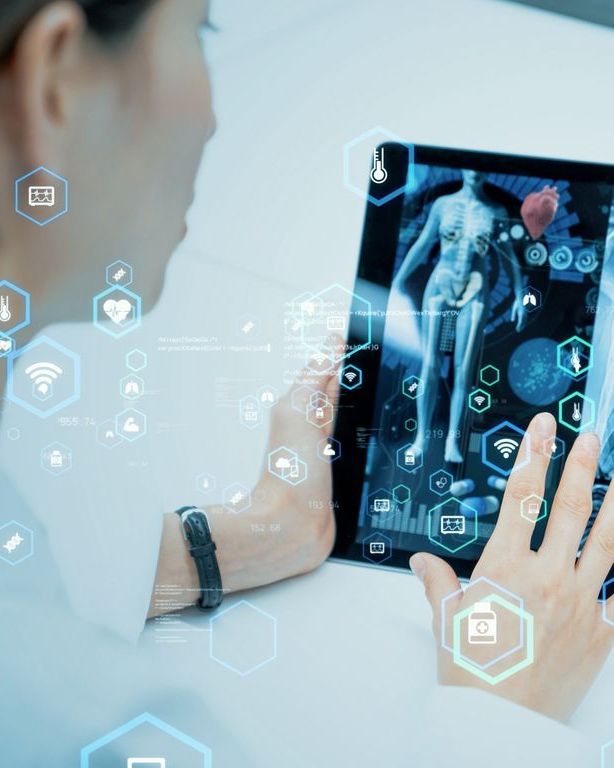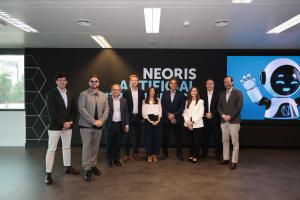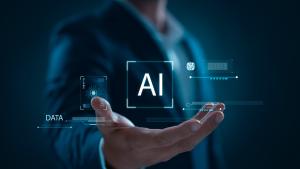Success Story Health with SAP

Digital transformation
in the health sector with SAP
The Context
In the early 1980s, medicine in Mexico witnessed the emergence of a novel healthcare project: the creation of a leading company in the hospital services industry which today ranks among the country’s best hospitals.
This project, conceived as a high-tech medical concept aimed especially at the integration of care, teaching and biomedical research, was undertaken by a group of visionary doctors who founded this non-governmental institution. It was distinct from already existing traditional private hospitals in Mexico City and had the goal of responding to society's healthcare needs.
In recent years, the growing demand for services, combined with limited resources, has highlighted the need to improve efficiency and accessibility in the Mexican healthcare sector. Within this context, technological development has emerged as a crucial catalyst for transformation. The implementation of modern systems and digital platforms is a way to enhance information management, facilitate care and optimize internal processes.


The Challenge
The institution had long been considered one of the most important hospitals in the country due to the quality of its services in different specialties such as endocrinology, gastroenterology, nephrology, pulmonology, neurology, neurosurgery and oncology, among other forms of care. Recently, it saw the need to take a further leap forward to modernize and take advantage of advanced technology to continue to maintain its high-quality standards.
After several attempts to implement a comprehensive hospital system, the healthcare provider realized the need to achieve the integration of its administrative and financial areas to optimize business processes utilizing the best SAP practices.
In pursuit of this objective, NEORIS was selected as the consulting firm that would lead Project Core, a modernization process involving the implementation of SAP Healthcare with AWS. The transformation had to work in alignment with existing legacy systems in the organization, such as LABSYS (laboratories), INDICIUM (Supplier Portal), HEMOCOD (Blood Bank), MEDSYS (previous hospital system), Medical Points, Points of Sale, Diagnostic Imaging and PeopleSoft (Payroll), among many other applications.
Another distinct challenge for the institution was functionally addressing processes it considered pain points, such as:
- Materials on display
- Emergency carts (drawers and trays for transporting medicine)
- Medical baskets (for transporting medical devices and supplies)
- Doctor stations and patient service points
- Supplier portals
- Nutrition modules
- Agenda modules
The Solution
In June of 2021, NEORIS started the implementation of SAP with AWS in the Project Core, which used the SAP Activate methodology, developing it in the following phases:
- 1. Prepare
The detailed project plan was defined with work teams formed from both the hospital staff and NEORIS. - 2. Explore
During this phase, the client's business model was documented in SAP AWS and the developments to be designed as part of the implementation were identified. - 3. Realize
The system was configured, the ABAP developments required in the organization model were generated as well as the unit tests, comprehensive tests, tests with roles and user profiles. This stage also included planning the training of end users. - 4. Deploy
The SAP AWS model was prepared and executed, configuring the environments for its production launch. In addition, master data such as customers, suppliers, medications and others were loaded into the system to ensure its correct operation. In addition, key users of the solution underwent the training required by NEORIS. - 5. Go-Live and Support
The SAP AWS model was put into production and the NEORIS team provided support. Incidents were reported, resolved and documented into a special records log.
The project included the following modules:
Technical modules:
- ABAP programming language
- PO - Module for integrating SAP AWS into legacy systems
- BASIS
- AWS Cloud
Functional modules:
- Patient management
- Patient billing
- Materials, medication and warehouse management
- Warehouse location management
- Non-hospital sales
- Finance
- Treasury
- Fixed assets
- Costs
- Budgets
- Rental contracts
- Consolidation and planning
- Business intelligence

After carrying out comprehensive tests (56 scenarios) and the User Acceptance Tests (36 scenarios) to verify that the product met expectations, Go Live was confirmed for June 4, 2023.
As the hospital operates on a 24/7 basis, one of the major challenges faced by the project was to have the Key Users (doctors, nurses, warehouse workers, administrators, etc.) carry out the sessions to define the Business Blue Print (BBP), functional specifications, comprehensive tests and training for more than 500 registered nurses.
Teams of consultants were set up to work 12-hour support shifts to cover the facility’s 24 hours a day, 7 days a week operation during the first eight weeks after launch.

The Results
Once the Project Core was launched, the medical entity had a system that allowed it to plan its medication and material needs to avoid shortages. It also successfully managed to automate processes such as:
- Supply chain
- Dispensing medicine to patients
- Return of medications
- Medication movements (inputs, outputs and transfers)
- Inventory processes
- Medical material requirements planning (MRP)
- Orders and Purchases
- Expiration date controls
- Patient Management
- Patient traceability through QR code bracelets
- Patient admission
- Nutrition modules
- Billing
- Accounting
- Point of Sale
Other highlighted results include:
- Improved planning time for medication and material needs. Previously, manual planning took 3 to 5 hours and there was a risk of errors. With the implementation of SAP AWS, planning time was reduced to 15 minutes.
- There is better control on batches of medicines, their expiration dates and supply to patients.
- The monthly accounting closings, which previously took 10 days to complete are now done in 4 days.
- The automatic generation of the tax transfer and the generation of the Statement of Transactions with Third Parties (DIOT) report that was done manually and took 3 or 4 days is now done automatically in only 15 minutes with SAP AWS.
- Better budget control.
- Nursing staff focus on their primary task, patient care, without having to deal with administrative tasks.
- Complete patient tracking during their hospitalization.
- Complete registration of movements and transactions carried out within the institution.

Testimonials
“After several months of tireless work and an absolute demonstration of ability, loyalty, commitment and determination to make things happen, we have taken a huge step to transform and streamline our management platform for the benefit of our patients, doctors and all of our staff. We have started a new era at the hospital, our work strengthened and conducted with great enthusiasm!”
Hospital General Director“After months of hard work, we are happy to see the results of our efforts. This initiative has revolutionized the hospital's operations, improving customer service, streamlining processes and optimizing organization among various areas. I appreciate the collaboration of our consultants and the invaluable support of our client.”
José Ángel Gerardo Flores Ceja - Director of Operations at NEORIS Foundational Solutions









